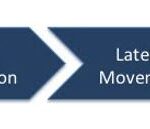How to Prevent Data Breaches from Audit Logs with Data Masking and Graph
Log files contain sensitive data. There have been several data breaches from log files, exposing millions of records and private data.
Audit logs contain passwords, user names, credit card data, among other sensitive information. The data appears as plain text in log files and can cause a significant data breach if they fall into the wrong hands.
In 2018, more than 330 million Twitter users were affected by a breach that exposed their passwords from an internal log. The bug caused the passwords to be stored as readable text in their computer system.
Today, cybersecurity is essential for every organization. Any unprotected data, whether stored in computer systems or transit, is prone to cyber-attacks. With audit logs holding such sensitive information, securing the logs is crucial to keeping the information from unauthorized access. The use of deep link analytics and threat analysis with Graph allows a security team to quickly identify the anomalous activity and react before a breach gets control of your environment or data exfiltration begins.
What are Audit Logs?
An audit log is a record of the events happening in a computer system. It contains restricted information such as passwords and IP addresses. The sequential logs and records become an audit trail which can be accessed by bad actors readily to find your sensitive or confidential data.
Logs are essential in a system as they help improve security by detecting any unauthorized access. They also help system administrators to find and debug problems.
However, audit files can be altered, corrupted, or even stolen by a bad actor like any other files in your system. They contain sensitive data, making them a target for hackers or malicious insiders who are looking for a way to wreak havoc on your environment. The worst part of all is the majority of these logs and the respective data are in plain text making them much less secure.
How to Secure Audit Logs
Encryption
Encrypting your audit files ensures they’re protected when in your servers and while in transit to a log collector or system analysis tool. Only users with the encryption certificate can access and view the audit logs.
However, it’s also possible for hackers to compromise and access your encrypted files. In May 2021, hackers accessed Acer’s files and leaked images of sensitive financial spreadsheets and documents. If hackers obtain the encryption certificate or decryption key using tactics such as a “Man in the Middle” attack, your logs will no longer be protected. You must ensure that sensitive information is protected as soon as it appears in the audit file or while in transit.
Data Masking
As information in log files is stored in plain text and can be accessed with a description key, the best way to protect it is by masking the data at the source.
Data masking also referred to as data anonymization or data obfuscation, replaces sensitive data with fictitious functional data like characters, data scrambling, substitution, and shuffling, among others. The goal is to create a version of the data that cannot be decrypted or deciphered.
Masking the data at the source—instead of the server—ensures all the sensitive data entered at the source, such as private keys and passwords, are protected. The actions taken by a bad actor would setoff a notification of anomalous activity and with the deep link analytics and in database machine learning with Graph technology, we can easily help you be much more proactive in your threat analysis and reaction.
Some compliance regulations require you to keep your audit logs for a particular duration. The longer you retain them, the more the risk of exposure. Masking the data will help you keep the logs secure. Constant analysis of the data stored for set periods of time will also ensure you are proactively watching for any type of inappropriate action take either by an insider threat actor or external bad actor attempting to access the sensitive data within your logs.
Mask Your Audit Logs to Prevent Data Breach
In a world of relentless cyber-attacks and data breaches, you must secure your data. Audit logs help organizations manage security and risk, but sensitive and confidential information is at risk when they’re compromised. The best solution is to mask your data to prevent unauthorized parties from accessing and viewing it.
Implement true Graph analytics to ensure proactive threat analysis
With the never-ending alerts, events, activity notices, remote workers, partner access and many other forms of risk within your environments, cyber-attacks and data breaches are becoming more difficult to identify. The in database machine learning, connected data analysis, deep link analytics and overall centralized viewpoint offered by Graph analytics, we will enable your SOC and NOC analysts with the most comprehensive review and automation on the market


